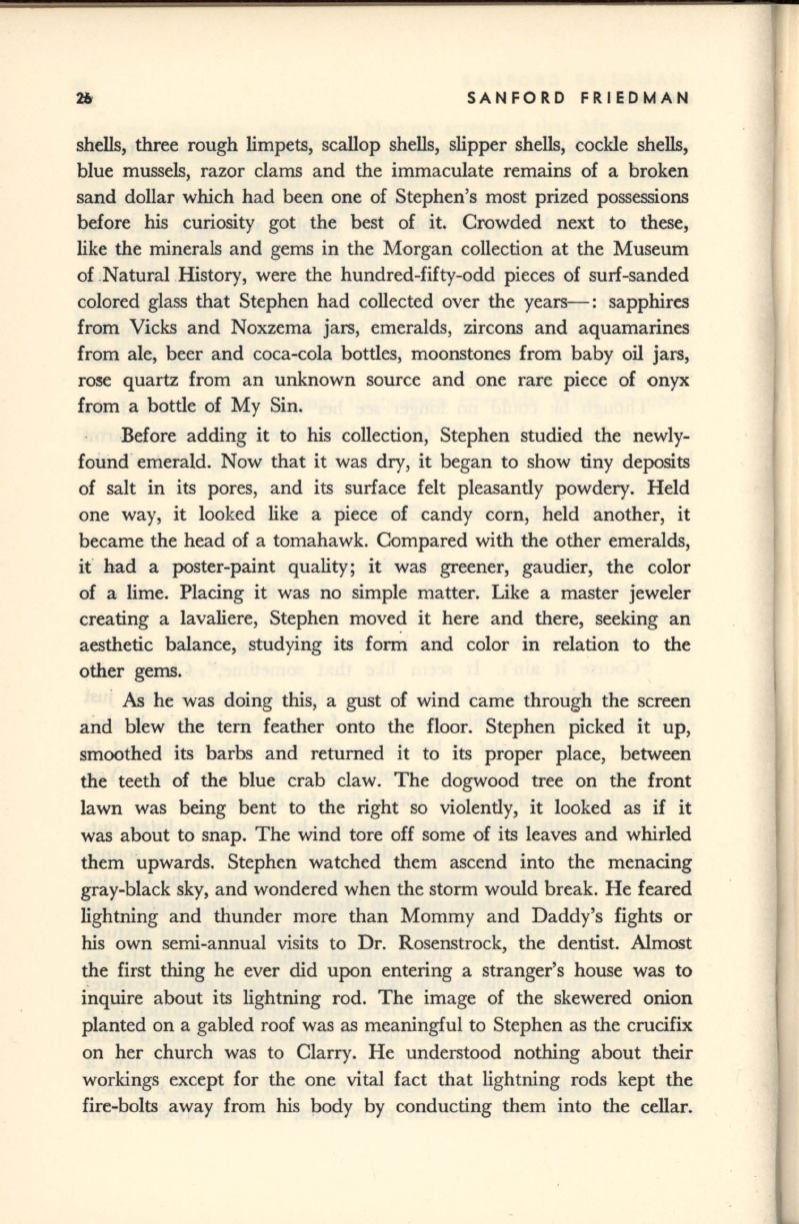
SANFORD FRIEDMAN
shells, three rough limpets, scallop shells, slipper shells, cockle shells,
blue mussels, razor clams and the immaculate remains of a broken
sand dollar which had been one of Stephen's most prized possessions
before his curiosity got the best of it. Crowded next to these,
like the minerals and gems in the Morgan collection at the Museum
of .Natural History, were the hundred-fifty-odd pieces of surf-sanded
colored glass that Stephen had collected over the years-: sapphires
from Vicks and Noxzema jars, emeralds, zircons and aquamarines
from ale, beer and coca-cola bottles, moonstones from baby oil jars,
rose quartz from an unknown source and one rare piece of onyx
from a bottle of My Sin.
Before adding it to his collection, Stephen studied the newly–
found emerald. Now that it was dry, it began to show tiny deposits
of salt in its pores, and its surface felt pleasantly powdery. Held
one way, it looked like a piece of candy corn, held another, it
became the head of a tomahawk. Compared with the other emeralds,
if had a poster-paint quality; it was greener, gaudier, the color
of a lime. Placing it was no simple matter. Like a master jeweler
creating a lavaliere, Stephen moved it here and there, seeking an
aesthetic balance, studying its form and color in relation to the
other gems.
As
he was doing this, a gust of wind came through the screen
and blew the tern feather onto the floor. Stephen picked
it
up,
smoothed its barbs and returned it to its proper place, between
the teeth of the blue crab claw. The dogwood tree on the front
lawn was being bent to the right so violently,
it
looked as if it
was about to snap. The wind tore off some of its leaves and whirled
them upwards. Stephen watched them ascend into the menacing
gray-black sky, and wondered when the storm would break. He feared
lightning and thunder more than Mommy and Daddy's fights or
his own semi-annual visits to Dr. Rosenstrock, the dentist. Almost
the first thing he ever did upon entering a stranger's house was to
inquire about its lightning rod. The image of the skewered onion
planted on a gabled roof was as meaningful to Stephen as the crucifix
on her church was to Clarry. He understood nothing about their
workings except for the one vital fact that lightning rods kept the
fire-bolts away from his body by conducting them into the cellar.


